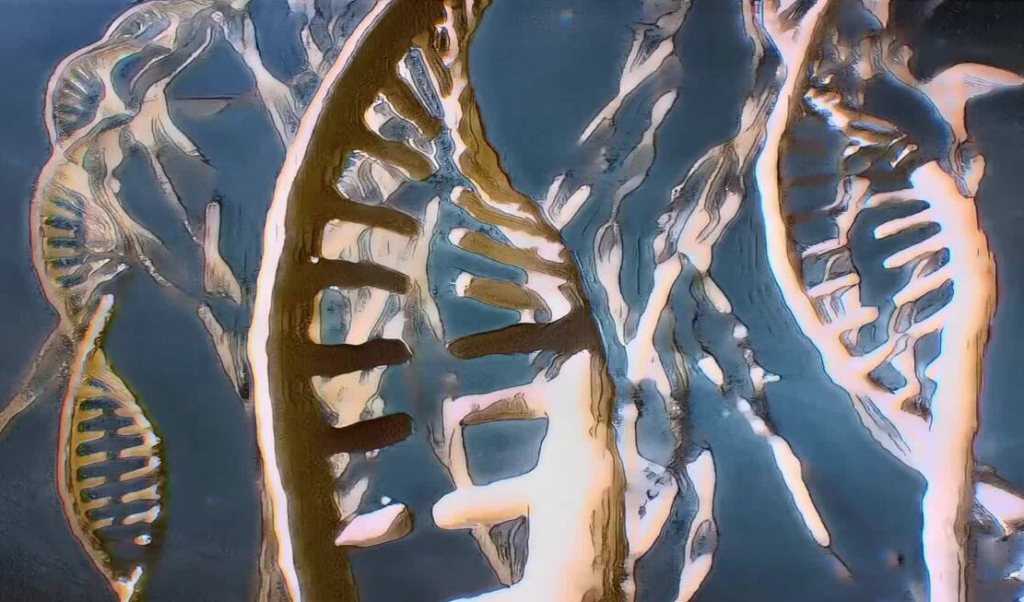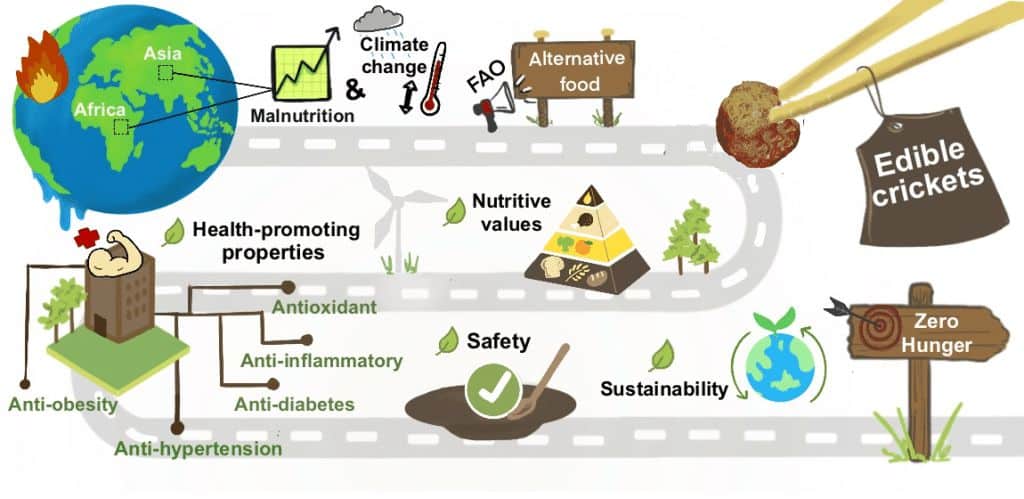Are you seeking a protein supplement that is both nutritious and sustainable?
The Global Bugs Proothie Protein Bar could be the solution for you. This protein bar is made with high-quality protein derived from crickets, which include a rich source of leucine, omega-3 fats, and fiber. The Global Bugs Proothie Protein Bar stands out from other protein bars as it contains 20% of protein and no added sugar, making it a wise choice for individuals who prioritize their health. The bar offers a balanced and diverse nutritional profile, making it an excellent option for anyone aiming to maintain a healthy lifestyle.
Fat, carbohydrate and protein dominate the content of our diet. All three are needed for the body to function normally. Fat and carbohydrate mainly provide the body with energy and they can therefore be stored for use at a later time. Protein, on the other hand, cannot be stored – everything we eat is broken down to build new proteins. If you eat an excess of protein, it cannot be stored and used as protein, but must be converted into fat or carbohydrate.
The body needs about 300 g of new protein per day
You don’t need to eat 300 g of protein per day, because a larger part is taken from old protein that the body reuses. The daily requirement is therefore significantly lower than 300 g but varies depending on how physically active you are and how old you are. Older people have a harder time reusing protein and therefore need to eat more protein. The researchers have slightly different opinions about the daily requirement for adults who have not yet reached old age, but a figure that appears is 0.8 g per kilogram of body weight. If you are young and growing, exercise or are old, the need increases – perhaps by around 50%. To be on the safe side, eating significantly more protein than the body needs is not a good idea. The research clearly shows that an excess of protein leads to a shortened lifespan. The logical conclusion is that one should eat enough protein to preserve muscle mass but beware of over-consuming protein.
Most of the protein in the body is found in the muscles. It is important to have enough muscles. You move more easily, run less risk of falling and the body’s chemical machinery (metabolism) works better. This means that an increased muscle mass contributes to better health, which becomes especially valuable the older you get. It is expected that muscle mass starts to decrease already at the age of 40. Until then, the size of the muscle mass has been maintained by hormones. After the age of 40, the influence of hormones decreases, but it is possible to preserve muscle mass by exercising and eating enough protein. Unfortunately, however, it is difficult to restore lost muscle mass.
About the structure of proteins
There are many proteins that have very sophisticated structure and specific tasks in the body. Proteins are made up of smaller building blocks called amino acids. Humans – and most other mammals – use 20 different amino acids, of which 9 cannot be produced by the body but need to be supplied through the diet, and these amino acids are therefore called “essential”. With the help of all 20 amino acids, the body can build all the proteins it needs.
The genetic code (DNA) contains instructions for how the amino acids should be linked together into a long sequence that is unique to each protein. It becomes a long string, but because the amino acids have different properties and affect each other, the string folds up and creates bonds here and there between different parts of the string. The result is a 3D structure that is highly specific and completely unique to each individual type of protein. The protein acquires properties that are determined by how different amino acids are exposed in and on the three-dimensional structure. Some proteins fold into a ball-like structure – globular proteins. Other proteins have a more extended form.
About the amino acid leucine and its role in building muscle protein
The liver has a key role because it needs to manufacture many vital proteins. The liver works with this even when we sleep. The muscles, on the other hand, need to produce even more protein than the liver to repair the fibres that are damaged by the muscle wear and tear that normally occurs during physical work. If there was no barrier, then after vigorous physical work the muscles would compete with the liver for the amino acids. But there is a mechanism that means that the muscles only start producing new protein if there is a good supply of amino acids. It is the amino acid leucine that signals this to the muscles.
Leucine occupies a special position among the 20 amino acids because the muscles sense how much leucine is in the blood. If there is not enough leucine, the muscles will not start making protein. The liver, on the other hand, does not have that barrier and can continue to synthesize vital proteins regardless of the leucine concentration in the blood. This means that you should eat protein to fill the need that arises after muscle activity. You then need to eat approximately 2.0-2.5 g of leucine to reach the threshold that allows the muscles to start building more muscle fibres. For well-trained individuals , it does not matter much when you eat the protein, but for untrained people , leading researchers believe that it is an advantage to concentrate the protein intake at the evening meal (6-7pm) and breakfast.
Meat, fish, lentils, beans and nuts contain about 1.2-1.7 g of leucine per 100 g of the specific food variant. 3 dl of yogurt contains just over 0.9 g. An egg contains 0.6 g. It is common for vegetarians who do not eat enough lentils and beans to become deficient in protein. If you are also active and exercise, the need for protein increases and thus the risk that the protein supply will be insufficient. Older people need to be especially careful to eat enough protein because otherwise muscle mass decreases, increasing the risk of ill health.
To reach 2.0-2.5 g of leucine , you need to eat about 30 g of protein. It can be difficult to reach this amount, for example at breakfast if you are not eating protein-rich food. You should also know that legumes contain less leucine than, for example, meat does. If you train a lot, the needs increase. But with the help of the Global Bugs Proothie Protein Bar, you can supplement your supply of protein by “topping up” the supply of protein with high-quality protein. The protein comes from crickets and contains plenty of leucine . Global Bugs Proothie Protein Bar contains no added sugar but plenty of dried fruit, omega-3 fat and fibre. Together with high-quality protein, the Global Bugs Proothie Protein Bar therefore offers a complex product with a uniquely strong health profile.
Written by Mr. Per Bengtsson – Global Bugs Asia Advisor / M.D. Ph.D. / Medical expertise in gastroenterology and nutrition





